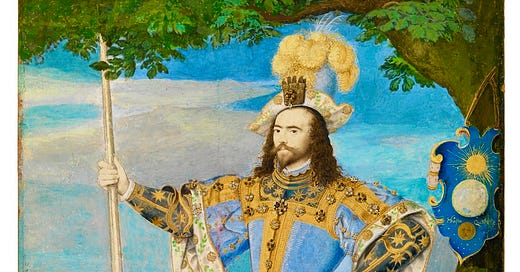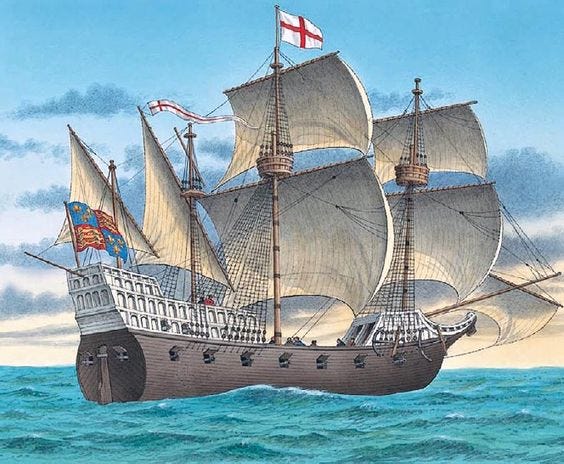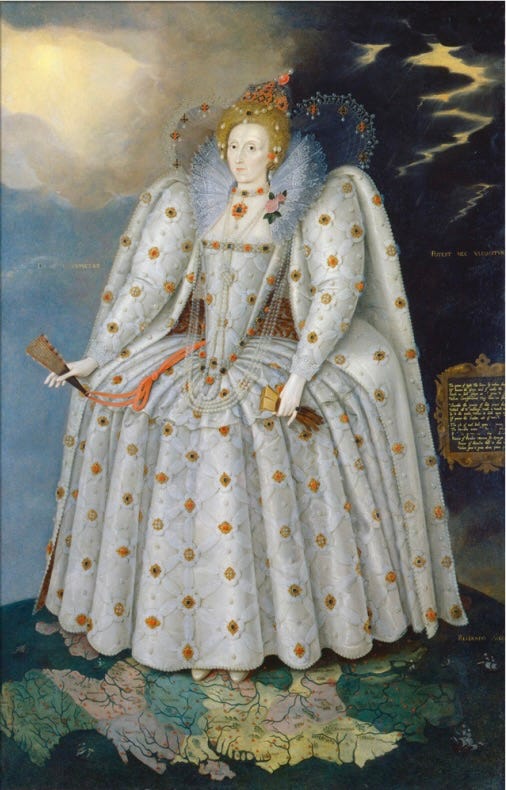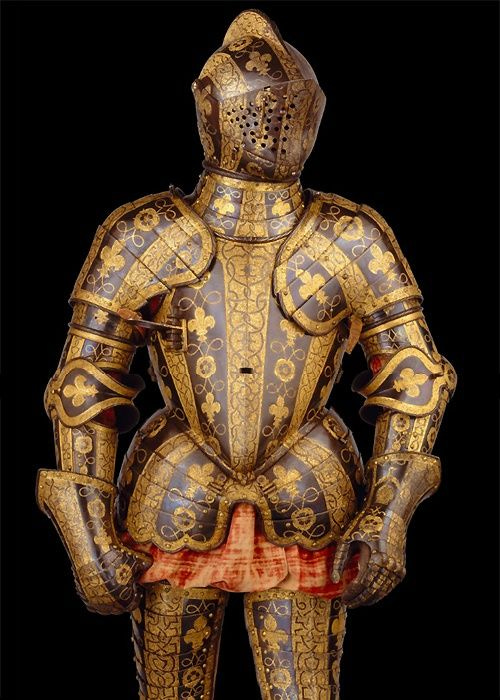Spendthrift Cumbrian lord turned pirate to impress Elizabeth I
Wealthy George Clifford bankrupted himself buying fancy clothes and horses to woo Virgin Queen

Of all the glamorous, adventurous and wealthy nobles who ruined themselves pursuing the fickle favour of the flirtatious Queen Elizabeth I, the most spectacular example is George Clifford, the 3rd Earl of Cumberland.
An inveterate gambler, jouster, wastrel, and womaniser, he was an exceptional naval commander who played an important part in the destruction of the Spanish Armada. But he spent so lavishly on flashy clothes, huge tournaments, gilded armour and elaborate events aimed at winning the queen’s good opinion, he almost frittered away one of the largest inheritances in England.
He eventually resorted to privateering, licensed piracy, in a frantic attempt to rebuild his fortune. Elizabeth’s regime was blocked from trading legitimately with much of the world by Philip II of Spain. The sea dogs, as they were disparagingly called by the Spanish authorities, were English privateers who, with the consent, license and sometimes financial support of the queen attacked and plundered Spanish colonial settlements and treasure ships in the second half of the 16th century.
Mariners like Sir Francis Drake and Sir Walter Raleigh made themselves and their backers immensely rich through piracy and George would eventually be driven by sheer desperation to join them.
George Clifford was born on 8 August 1558 at Brougham Castle in Westmorland. He came into his title in 1570 and within a decade emerged as the richest and most prominent representative of the northern aristocracy in the Virgin Queen’s court. George owned extensive estates across the north including the castles at Brougham, Appleby, Brough, Pendragon and Londesborough Hall.
He was not the stupidest member of Elizabeth’s court by any means. He was witty, quick on the uptake and a magnificent physical specimen to boot. He devoted some attention to mathematics and geography at Cambridge University and although he never graduated these interests helped make him an expert navigator.
But Elizabeth recruited only the most intellectually gifted and serious-minded men to be her top advisors. Her council was staffed by people with brains and shrewdness such as her sinister spy chief Francis Walsingham, her ruthless principal adviser Sir William Cecil, and his brilliant, hunchbacked son Robert.
For her personal court she chose an entirely different type of chap - handsome devils like George. Personal courtiers were recruited for their glamour, not wisdom, sex appeal not discretion. With his penchant for ostrich-plumed helmets, powder blue surcoats and gold embroidery, George was just the sort of dark-haired dangerous rogue Elizabeth found attractive.
Once he arrived in Whitehall from Cumbria, Elizabeth singled out George as a man of great personal beauty. She liked gorgeous men who were prepared to finance her often staggeringly expensive amusements. The outlay would drive George to the brink of bankruptcy, and over it. Despite his wealth, his northern origins and regional accent counted against him.
Seemingly mesmerised by the queen’s erotic charge, the ambitious earl risked all in an attempt to become her chief playmate. He ascended to the pinnacle of fatuousness when he was chosen as Queen Elizabeth’s Champion in 1590. Officially, the champion’s job was to challenge anyone who denied the new monarch's right to occupy the throne (as if) to trial by combat.
To equip himself for the task he would never carry out, he commissioned the top military artificer Jacob Holder of Greenwich to create what is today regarded as the finest suit of Tudor armour.
Copiously enamelled with Tudor Roses, fleur-de-lis, and Elizabeth’s emblem of two E’s back-to-back, it set George back an estimated £250,000 (2023). Among his many other extravagances, George paid for no fewer than three costumed pageants to commemorate Elizabeth’s accession to the throne.
They were staged at the Westminster jousting tiltyard in 1593, 1595 and the first was in November 1590, the day he was made her Champion.
Clad in glittering steel armour with white feathers on his helmet and a white surcoat on his breast, the symbolic colour of the virgin queen, he was accompanied by a page playing the wizard Merlin. George was posing as an Arthurian knight from his family’s Pendragon Castle near Kirkby Stephen in Cumbria.
The castle was allegedly built on the site of an older fortress owned by Uther Pendragon, father of the legendary King Arthur. The Clifford family played up the Arthurian connection by adopting a fiery dragon as its heraldic crest. By dressing up in this way, George was presenting himself as some kind of successor to Arthur. The queen’s grandfather, Henry VII, also claimed to be descended from Arthur as a means of beefing up his shaky claim to the throne.
The performance was a sort of serio-comic affectation hinting at George’s past loyal service - and his lack of material reward. A beautiful if slightly ludicrous miniature painted by Nicholas Hilliard from this time commemorates his appointment as champion. It shows George in tilting attire: he is wearing star-spangled leg protectors, blued steel armour, a surcoat gilded with gold leaf and his right arm is held out to support a tilting lance.
He has brown eyes, long loose brown hair, moustache, and a full beard trimmed to a point. The queen's glove, set in diamonds with a crown visible on the embroidered fingers, is pinned by a rose jewel with a pendant pearl to his ostrich-plumed hat as a sign of her favour. The hat echoes the design of the blue surcoat. It features armillary spheres – models of the solar system - symbolising heavenly wisdom. There are also Tudor roses and gold staffs encircled by snakes, symbolising hidden knowledge. On his shield is a motto “Hasta Quango,” probably Latin for “a lance at any time,” implying Clifford's constant readiness to fight to show his unconditional loyalty to the queen.
In the background are the Cumberland mountains and an idealised castle hinting at his assumed Arthurian role. In return for George’s many expensive displays of personal devotion, Elizabeth rewarded him with things that cost her nothing. She made him a Knight of the Garter in 1592, gave him a key role in the formation of the East India Company and, in a signal honour, he sat as a Peer in the trial of Mary, Queen of Scots in 1586, with no option on which way to vote, of course. But well before these baubles landed in his lap, Clifford had run through a great part of his handsome property.
This is an extract based on a chapter from a new book, The Trophy at the End of the World. You can buy it instantly here:
: https://www.fletcherchristianbooks.com/product/the-trophy-at-the-end-of-the-world
Or you can pick up a copy from the New Bookshop, Main Street, Cockermouth, Bookends in Keswick or Carlisle and Sam Read in Grasmere.
Keep reading with a 7-day free trial
Subscribe to Hidden Cumbrian Histories to keep reading this post and get 7 days of free access to the full post archives.






